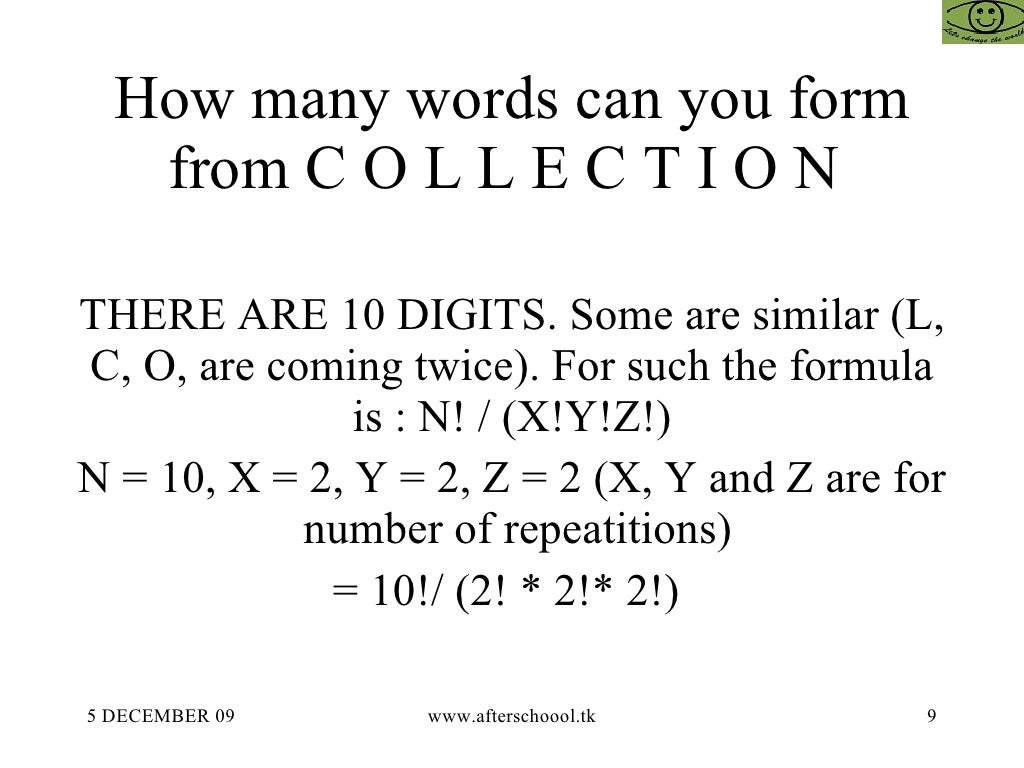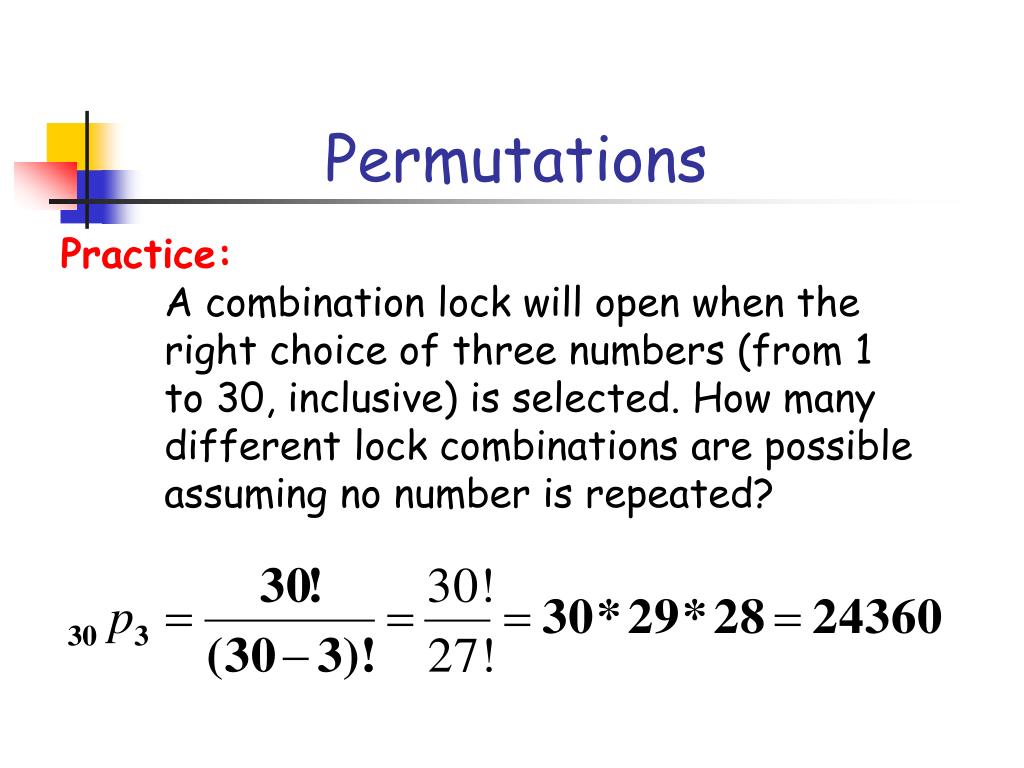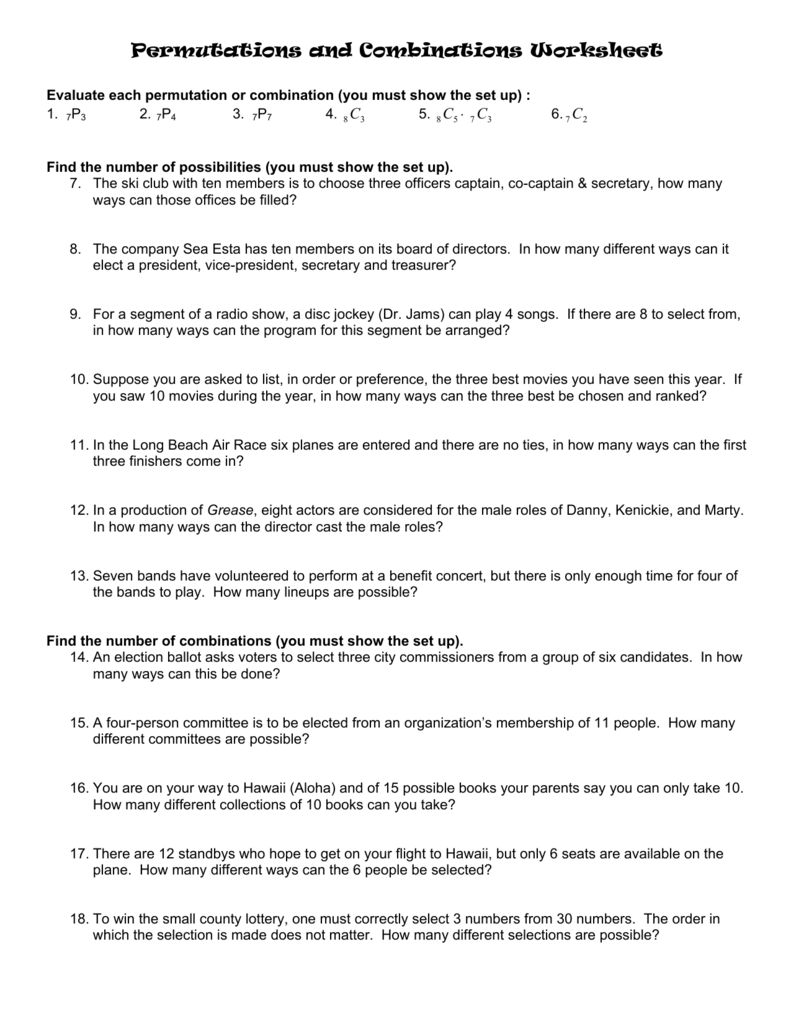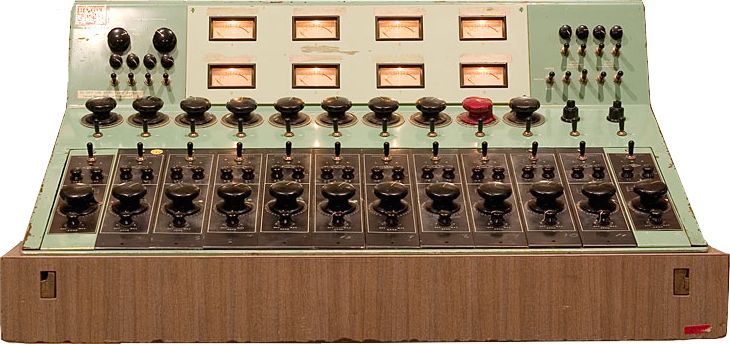

The factorial of a number is obtained by taking the product of all the numbers from 1 to n in sequence. Permutation of two things from three given things a, b, c is ab, ba, bc, cb, ac, caĬombination of two things from three given things a, b, c is ab, bc, caįor the different possible arrangement of 'r' things taken from 'n' things is \(^nP_r=\frac \), or we have \(^nP_r =r!× ^nC_r \) How Do You Find Factorial of a Number? Permutations are used for things of different kind.Ĭombinations are used for things of similar kind. Permutations are used when order/sequence of arrangement is needed.Ĭombinations are used to find the number of possible groups which can be formed. Let us check the below table to more clearly understand the difference between permutation and combination Permutation Here in combinations, we are only interested in the set of things which make a particular group, and the arrangement of the individual elements within the group is not considered. And Combination refers to the number of smaller groups or sets which can be formed from the elements of a larger set. Permutation refers to the different possibles arrangement of things and is used when the things are of a different kind. Solved Examples on Difference Between Permutation and CombinationįAQs on Difference Between Permutation and Combinationĭifference between the permutation and combination is needed, to understand the right usage of permutation and combination. 1.įormulas of Difference Between Permutation and CombinationĮxamples of Difference Between Permutation and Combination Here in this lesson, we can learn the important factors which help us to easily identify the use of permutations and combinations.

The formulas of permutations and combinations are helpful to find the difference between permutation and combination. And to find the number of possible arrangements of dissimilar things, we use permutations For grouping of things, or to get a count of the number of subgroups that can be obtained from the given set of things we use combinations. The difference between permutations and combinations can be understood by knowing the different situations where the permutations and combinations concepts are used. There are 60 different arrangements of these letters that can be made.Difference Between Permutation and Combination Finally, when choosing the third letter we are left with 3 possibilities. After that letter is chosen, we now have 4 possibilities for the second letter. For the first letter, we have 5 possible choices out of A, B, C, D, and E. Let us break down the question into parts. \( \Longrightarrow \) There are 60 different arrangements of these letters that can be made.

\( \Longrightarrow\ _nP_r =\ _5P_3 = 60 \) applying our formula \( \Longrightarrow r = 3 \) we are choosing 3 letters \( \Longrightarrow n = 5 \) there are 5 letters Let us first determine our \( n \) and \( r \): We will solve this question in two separate ways. If the possible letters are A, B, C, D and E, how many different arrangements of these letters can be made if no letter is used more than once? When dealing with more complex problems, we use the following formula to calculate permutations:Ī football match ticket number begins with three letters. The arrangements of ACB and ABC would be considered as two different permutations. Suppose you need to arrange the letters A, C, and B. \( \Longrightarrow \) There are 10 ways in which Katya can choose 3 different cookies from the jar.Īs mentioned in the introduction to this guide, permutations are the different arrangements you can make from a set when order matters.

\( \Longrightarrow\ _nC_r =\ _5C_3 = 10 \) applying our formula \( \Longrightarrow r = 3 \) we are choosing 3 cookies \( \Longrightarrow n = 5 \) there are 5 cookies Since order was not included as a restriction, we see that this is a combination question. We must first determine what type of question we are dealing with. In how many ways can Katya choose 3 different cookies from the jar? Katya has a jar with 5 different kinds of cookies. Where \( n \) represents the total number of items, and \( r \) represents the number of items being chosen at a time. When dealing with more complex problems, we use the following formula to calculate combinations: The arrangements of ACB and ABC would be considered as one combination. As introduced above, combinations are the different arrangements you can make from a set when order does not matter.


 0 kommentar(er)
0 kommentar(er)
